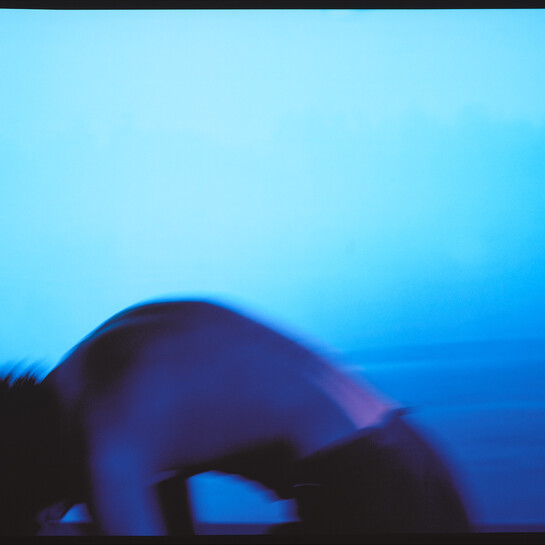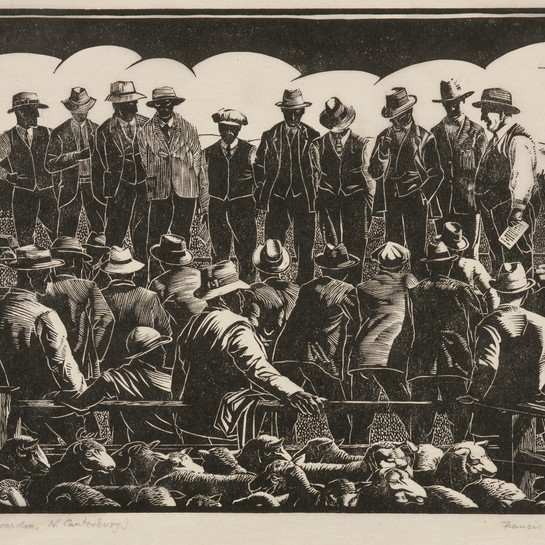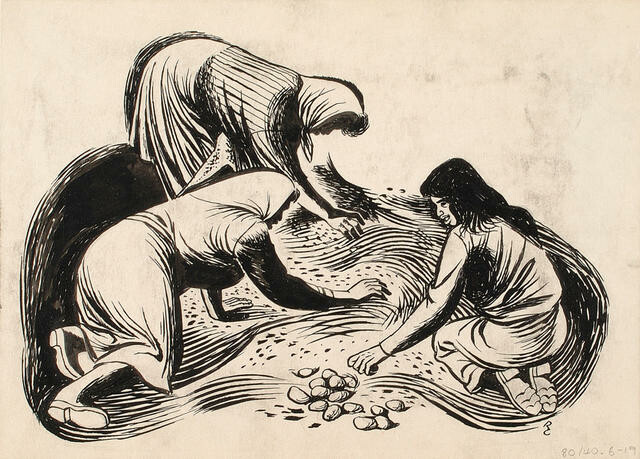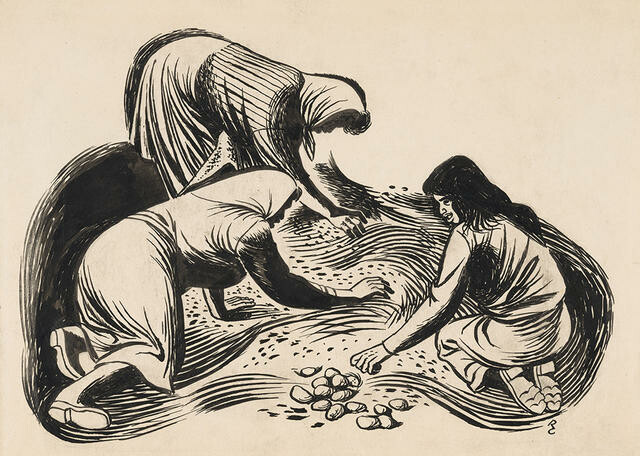Russell Clark
Aotearoa New Zealand, b.1905, d.1966
Potato Planting
- 1950
- Ink
- Presented by Rosalie Archer, 1975
- 152 x 210mm
- 80/40:6-16
- View on google maps
Location: Contemporary Collections Gallery
Tags: food, girls, headscarves, monochrome, people (agents), planting, women (female humans), youth
Ōtautahi Christchurch-born Russell Clark was principal illustrator for the School Journal for many years. In 1950 he travelled to Te Urewera in the northeast of Te Ika-a-Māui North Island to develop a special issue of the Primary School Bulletin, focusing on the small town of Ruatāhuna. Clark’s illustrations were printed alongside texts by local school students, iincluding this one by Milly Manihera about the practices and knowledge that ensured a plentiful crop of potatoes, and the community involvement from planting to harvest:
Potato Planting In the Urewera the main crop planted is potatoes. These are planted during the month of September. The potatoes are never planted more than twice in the same piece of ground without giving it a rest for three or four years. Everybody gives a helping hand with the planting. In this way the work is done much more quickly and does not seem so hard. The plough is used to do most of the work. First of all three furrows are made. At the bottom of the third furrow, seed potatoes are place at regular distances. When one row is planted the plough turns over the next furrow, which covers up the potatoes planted. This is repeated until the whole area is finished. About a week or a fortnight later the whole ground is harrowed. This levels off the ground and pulls out any weeds that have started to grow. When the plants are about six inches high, everyone takes part in the weeding and moulding of the potatoes. They are then left to grow until it is time to harvest them which takes place about February. Digging the potatoes is the hardest task of all. As with the planting, everyone lends a hand, and that makes the work much easier. The potatoes are dug and sorted. Those that are kept for eating are put in a pit dug in a shed out of the weather and used as they are needed.
He Kapuka Oneone – A Handful of Soil (from August 2024)
Exhibition History
Turn, Turn, Turn: A Year in Art, 29 July 2019 – 8 March 2020
Christchurch-born Russell Clark was a painter, sculptor, illustrator and university lecturer who had an enduring interest in Māori art, culture and history. He had a long association with the School Journal, and was its principal illustrator for many years. In 1950 he travelled to Te Urewera in the northeast of the North Island as part of a commissioned project, Ruatahuna, a primary school bulletin focused on a small town in the heart of the Ngāi Tūhoe rohe (district). Clark’s illustrations were printed alongside texts by local school students, including one by Milly Manihera about the centuries-old practices of potato production, which involved the whole community from planting to harvest. Describing long-held custom, she noted that those potatoes kept for eating were “put in a pit dug in a shed out of the weather and used as they are needed.”
Beneath the ranges,18 February – 23 October 2017
Christchurch-born Russell Clark was a painter, sculptor, illustrator and university lecturer who had an enduring interest in Māori art, culture and history.
In 1950 he travelled to Te Urewera in the northeast of the North Island for an illustration project for the School Publications Branch of the government’s Education Department. The commission was for 'Ruatahuna', a primary school bulletin focused on a small town in the heart of the Ngāi Tūhoe rohe, a region experiencing change.
The journal placed Clark’s illustrations alongside text by local school students, including Milly Manihera who explained the centuries-old practices of potato production, involving the whole community from planting to harvest. Describing long-held custom, she noted that those potatoes “kept for eating are put in a pit dug in a shed out of the weather and used as they are needed”.




